As someone who lives and breathes lofi music, I know that one of the most compelling aspects of this genre is its unique chord progressions.
These lofi chord progressions give the genre its trademark soulful, chilled-out sound, which we’ve all come to love and appreciate.
In this guide, we’re going to dive deep into this fascinating world and uncover the magic behind lofi chord progressions.
Plus, reveal secrets that will take your tracks to a new level.
We’ll be breaking down:
- What lofi music is ✓
- What makes a chord progression “lofi” ✓
- Chords, keys, and scales (major/minor) ✓
- The 7 best lofi chord progressions of all time ✓
- Extended, Augmented, and Dominant Chords ✓
- How jazz music influences lofi beats ✓
- Creating your own lofi chord progressions ✓
By the end of this article, you’ll be able to create lofi chord progressions like a true professional.
You’ll understand how they work, why they sound so good, and how you can incorporate them in your own tracks.
So, let’s dive in…
Table of Contents
What Is Lofi Music?
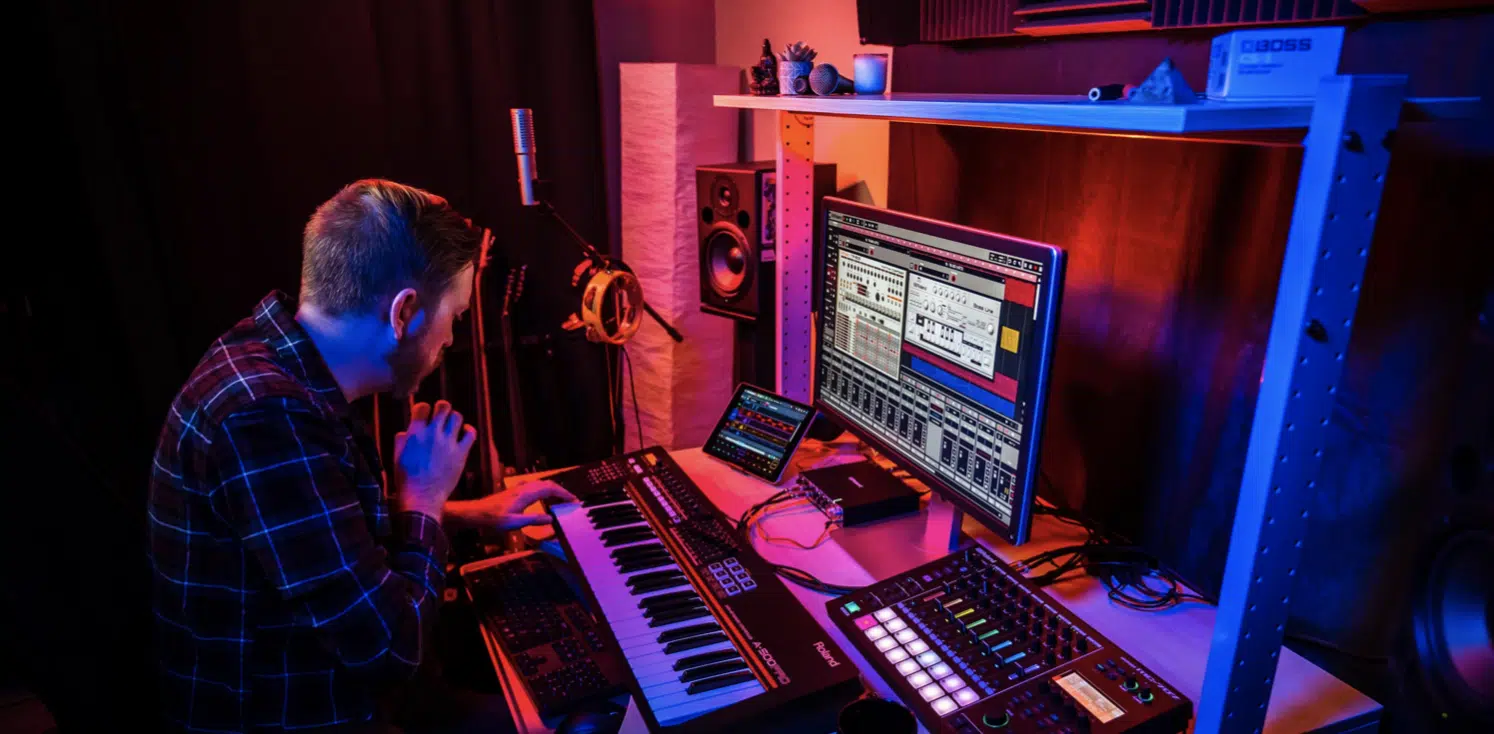
Lofi, or low-fidelity, music is characterized by its raw and imperfect sound.
Think about the crackle of vinyl, the hum of a worn-out tape, or the murmur of background conversation 一 and you’ve got a good idea of what I’m talking about.
Lofi music is all about capturing these imperfections that make it feel more authentic and human.
Now, the charm of lofi music isn’t just about the rawness…
It’s also heavily reliant on the unique chord progressions and melodies that are used.
That’s where our main topic, lofi chord progressions, comes into play.
Lofi chord progressions are the heart of the nostalgic, dreamy sound of lofi music, which you’ll shortly understand.
The Lofi Aesthetic

When we think of lofi, we often associate it with a specific aesthetic.
It’s that soft, mellow vibe, full of warmth and a sense of nostalgia.
Think of an old photograph, and picture it coming to life; that’s basically what lofi aims to achieve.
However, it’s not just about how it sounds but also about how it makes us feel.
This lofi aesthetic is one of the main reasons why it’s so popular, and it’s also what makes it a pleasure to create as a music producer.
The use of unique lofi chord progressions is integral to creating this aesthetic.
Each chord progression adds depth and emotion to lo fi beats 一 painting a vivid soundscape that draws listeners in.
Understanding Chords in Music Production
Before we dive into lofi chord progressions, let’s take a step back and discuss chords in general.
After all, a solid understanding of what chords are and how they function is crucial to creating effective chord progressions.
At the most basic level, a chord is a group of notes played simultaneously 一 forming the backbone of any melody.
It’s through chords that music gains depth and dimension.
But not all chords are created equal, as we’ll discuss in the following section.
-
Major Chords & Minor Chords: What’s the Difference?
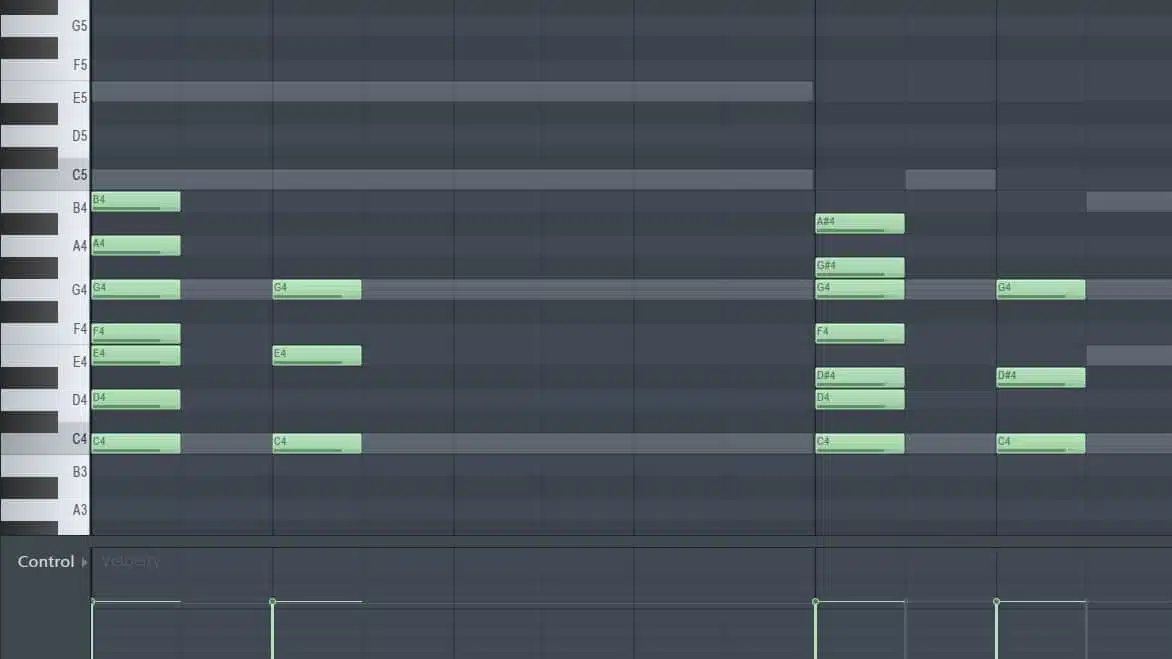
Major chords and minor chords each carry a different emotional tone.
Major chords often sound happy, bright, or triumphant while minor chords have a more melancholy, dark, or even mysterious sound.
This is due to the minor 3rd, which is one half-step lower than the major 3rd.
- A major chord 一 Consists of the root note, a major third, and a perfect fifth. Let’s take C major as an example. In the key of C, you’ll have the notes C, E, and G.
- A minor chord 一 Composed of a root note, a minor third, and a perfect fifth. Let’s take A minor as an example: A, C, and E.
In lofi music, we often find ourselves leaning heavily towards minor chords, and the reasons for this are twofold.
First, minor chords naturally lend themselves to the introspective, nostalgic feeling that is characteristic of lofi music.
And second, hip-hop, which is a key influence on lofi, traditionally uses a lot of minor chords.
NOTE: we’ll break down why the natural minor is so prominent in lofi music a little later on in the article.
-
Extended, Augmented & Dominant Chords
While major and minor chords are the most common chords, they are far from the only ones.
As you delve deeper into the world of music production and lofi chord progressions, you’ll start to encounter other types of chords.
These chords include extended chords, augmented chords, and dominant chords.
- Extended Chord 一 Include notes beyond the typical root, third, and fifth.

These can be 7th chords, 9th chords, and so on. They’re called “extended” because they extend the range of the chord beyond the octave.
- Augmented Chord 一 Major chord but with a raised (or “augmented”) fifth.
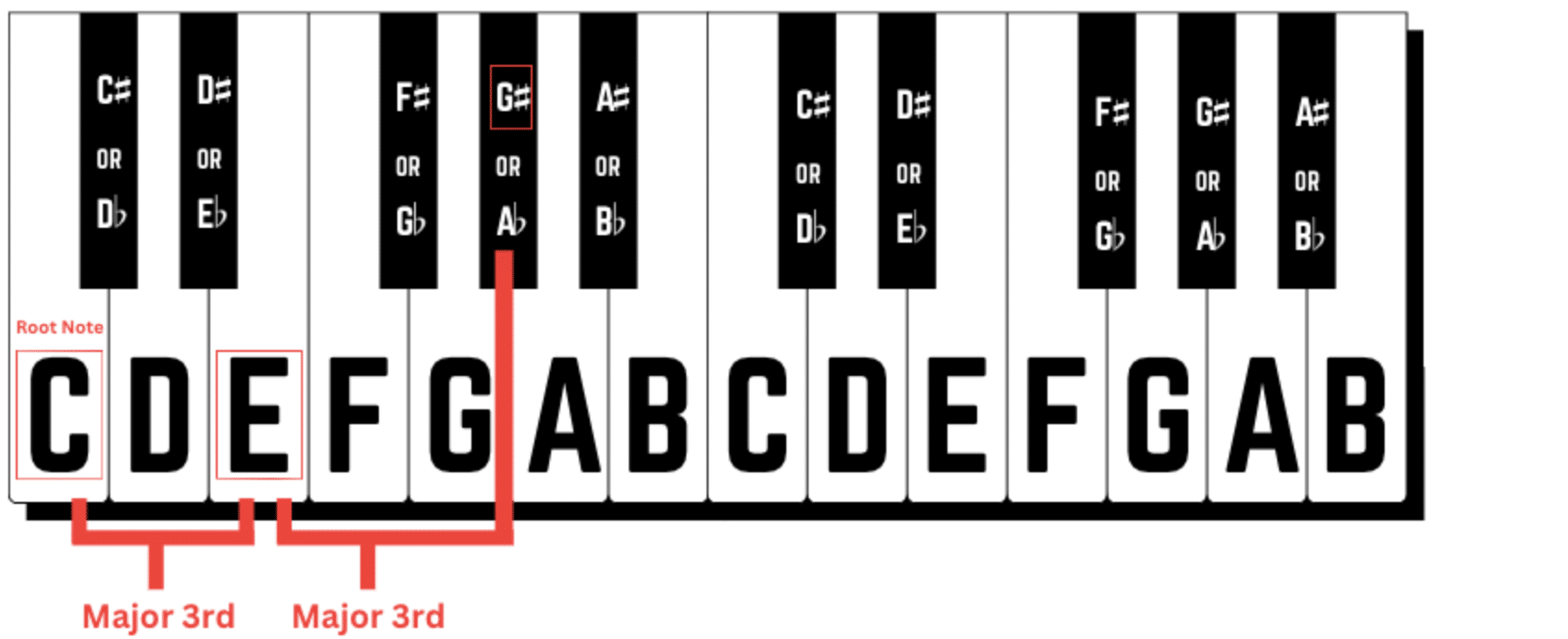
This gives them a unique, somewhat tense sound that can be used to great effect in your music.
- A Dominant Chord 一 Major chord with a minor seventh added.

They’re called “dominant” because, in traditional Western music theory, they are derived from the fifth note (or “dominant”) of the scale.
Understanding these types of chords can vastly expand your musical vocabulary.
Therefore, allowing you to create more complex, unique, and downright addicting lofi chord progressions.
What Makes a Lofi Chord Progression Special?
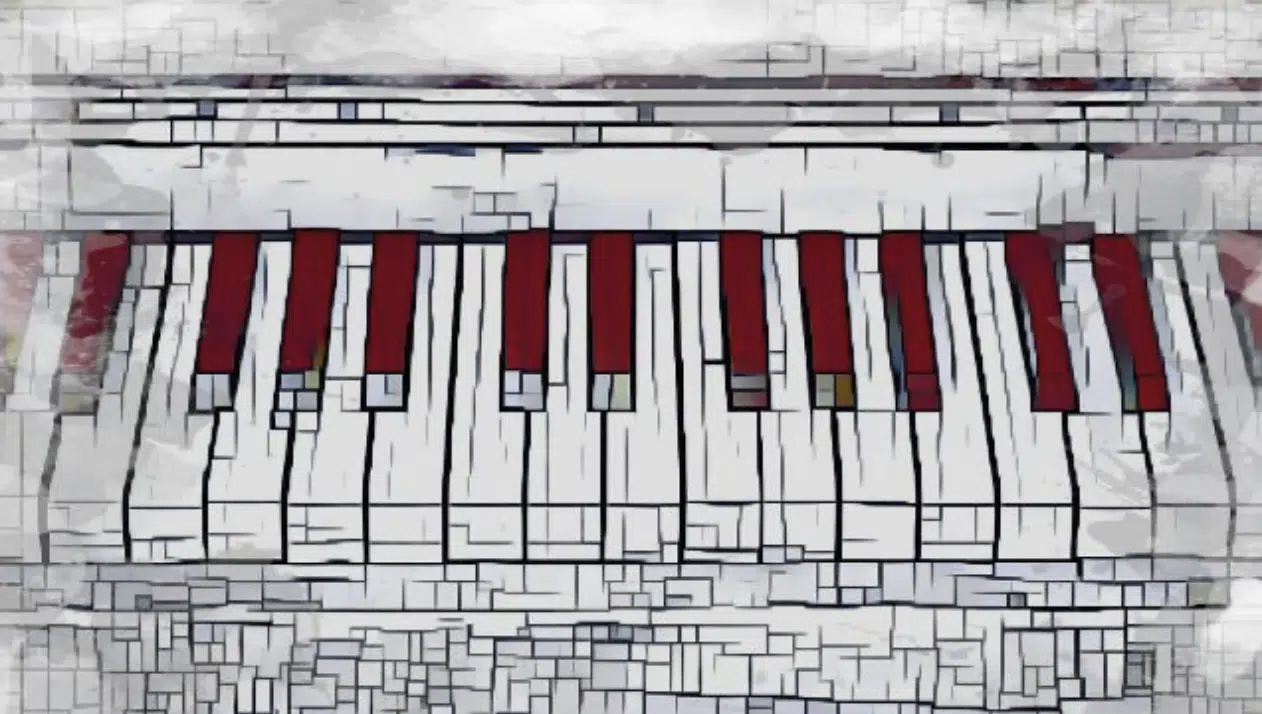
Now that we have some basic chord theory under our belts, let’s tackle the big question: What makes a chord progression ‘lofi’?
Well, the answer isn’t as simple as listing out a bunch of chords.
It’s about the feeling the progression invokes, and how it aligns with the lofi aesthetic we’ve been discussing.
As you listen to more and more lofi tracks, you’ll begin to notice some common chord progressions or patterns.
For instance, you’ll frequently hear a ii-V-I or a I-IV-V progression 一 especially in lofi tracks that lean towards a jazzier sound.
These progressions are the bread and butter of many genres, including jazz and vintage blues.
They translate well to lofi because of the rich, emotional soundscapes they can create.
However, the “common” progressions are not the only ones that work…
In fact, part of the beauty of lofi music is that you can experiment with all sorts of chord progressions (lush chords).
As long as you keep that lofi aesthetic in mind (that chill, nostalgic, introspective vibe), you can create some truly unique and captivating lo fi chords.
The following 7 lo fi chord progressions will make any previous chord you have in mind pale in comparison.
The 6 Best Lo Fi Chord Progressions
As you embark on your lofi music production journey, it’s important to understand and explore various lofi chord progressions/chord sequences.
These lo fi chord progressions are the foundational building blocks of your tracks, providing structure and harmony.
Let’s delve into the 6 best chord progressions for lofi tracks.
These specific chords and key signatures can help you create killer lo fi beats.
#1. Cmaj9 – G7#5 – Amin11 – Fmaj9 (I – V – vi – IV)
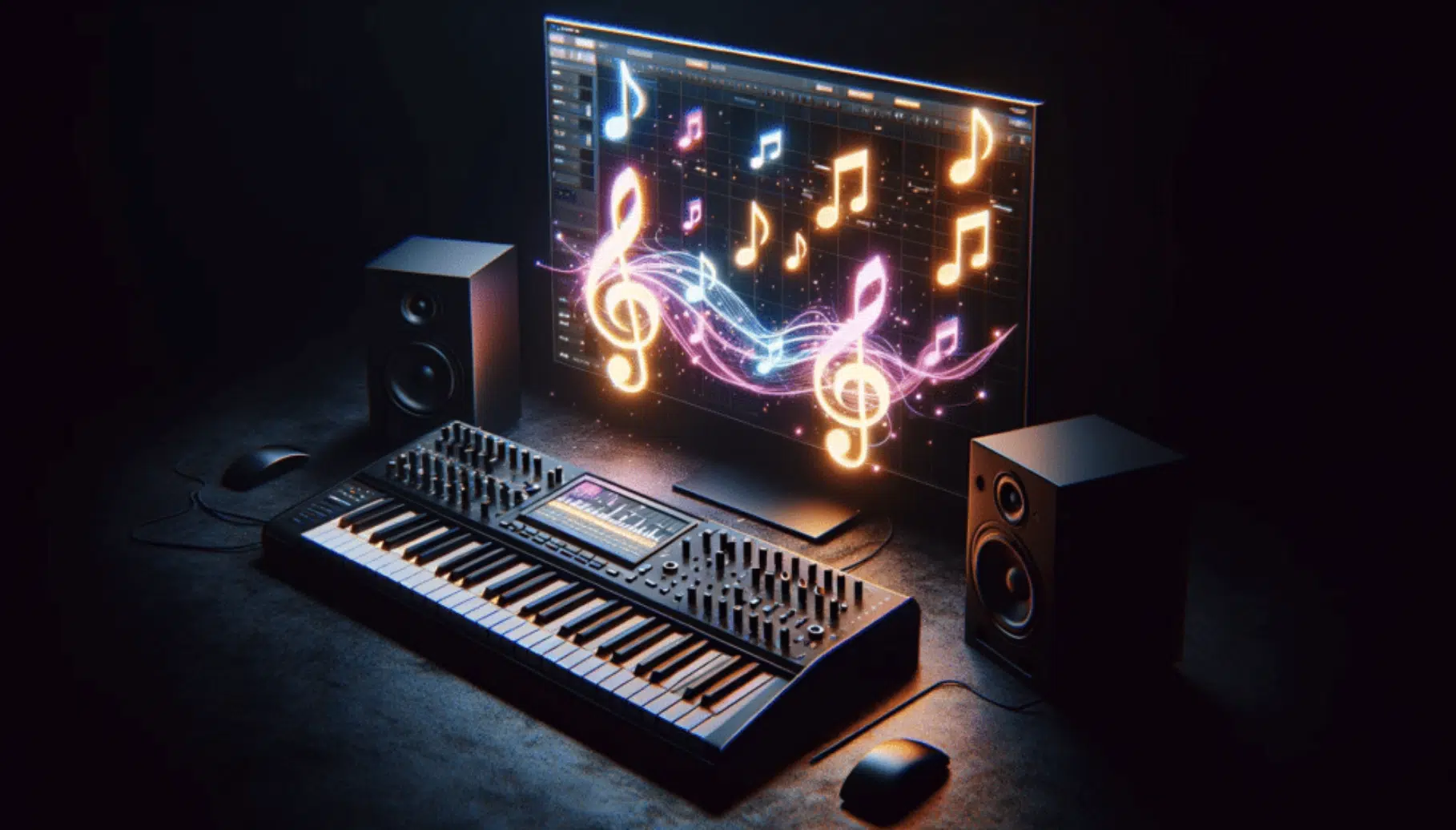
This progression is a variation of the classic I-V-vi-IV progression, which is one of the most common progressions in popular music.
The use of 9th and 11th chords, however, gives it that jazzy, sophisticated touch that is characteristic of lofi music.
The transition from the Cmaj9 to G7#5 creates a sense of tension and release 一 which is then beautifully resolved by the soothing Amin11 chord.
This is followed by the Fmaj9 chord, which rounds off the progression with a warm, full-bodied sound.
Using this chord progression, you can create a smooth, flowing rhythm that is perfect for a lofi track.
The mix of major and minor chords, along with the extended chords, adds richness and complexity to the same notes that is hard to resist.
#2. Cmaj9 – Fmaj13 (I – IV)

The I-IV progression is another classic progression that is used in many genres of music, from pop to rock to blues.
In this case, the use of 9th and 13th chords (two chords) gives it a distinct lofi feel.
The Cmaj9 chord gives the progression a bright, uplifting start 一 which is then complemented by the full, rich sound of the Fmaj13 chord.
Despite its simplicity, this progression has a captivating sound that can be the backbone of a great lofi track.
Using this progression, you can create a chill, laid-back lo-fi vibe that is perfect for chilling, relaxing, or thinking deeply.
The mix of major chords and extended chords adds depth and warmth to the sound, making it feel cozy and comforting.
#3. Cmaj7 – Amin7 – Dmin7 – G7#5 (I – vi – ii – V)
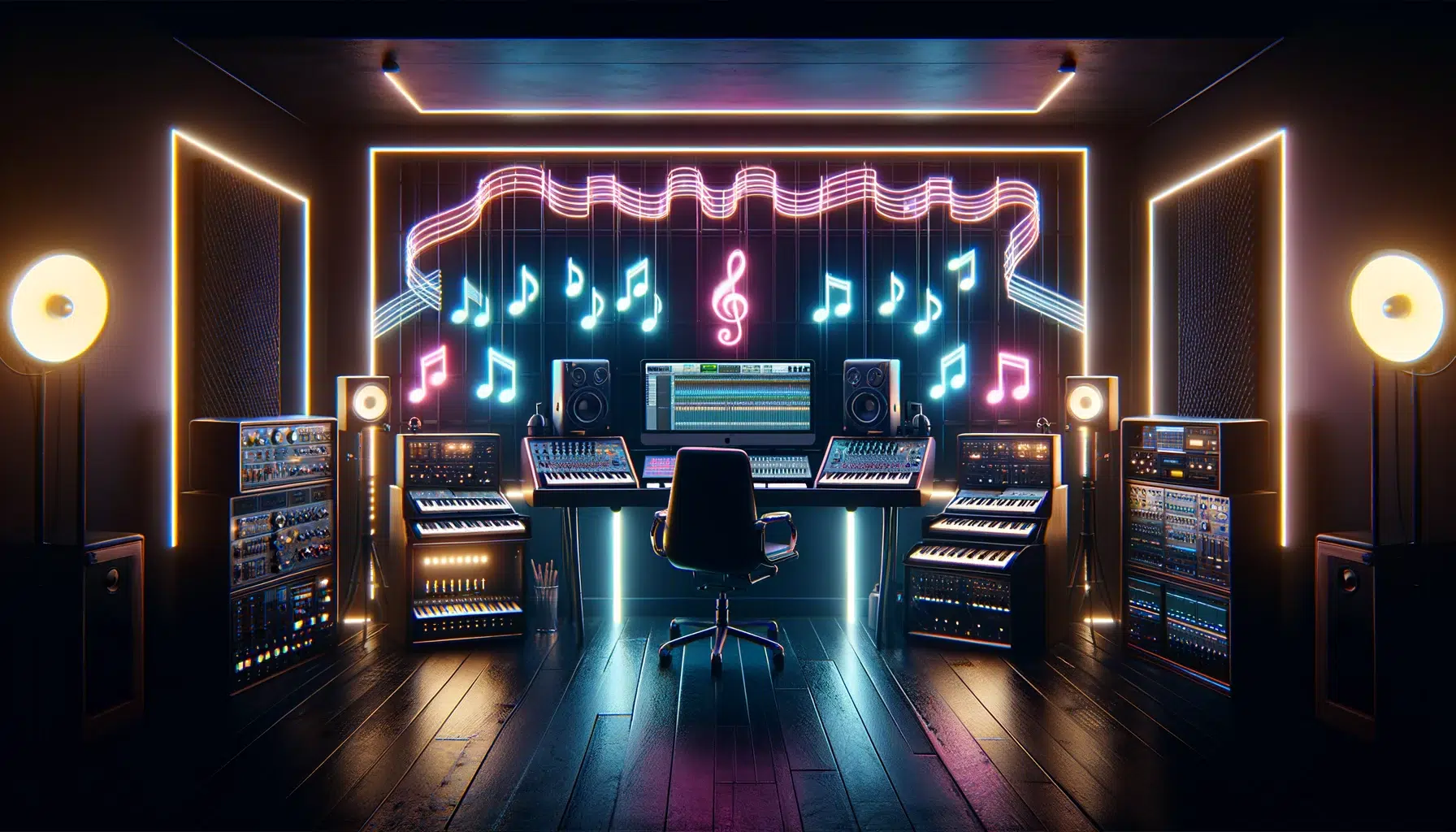
This lofi chord progression is a variation of the classic ii-V-I progression, which is the most common progression in jazz music.
The use of 7th chords gives it a jazzy feel, while the G7#5 chord adds a touch of tension that is then beautifully resolved by the return to the Cmaj7 chord.
The transition from the Cmaj7 to Amin7 to Dmin7 creates a smooth, flowing rhythm that is then disrupted by the G7#5 chord.
This creates a sense of anticipation 一 which is then satisfyingly resolved by the return to the Cmaj7 chord.
Using this progression, you can create a sophisticated, jazzy sound that is perfect for creating lo fi music.
The mix of major chords and minor seventh chords, along with the dominant 7#5 chord, adds richness and complexity to the sound that is truly captivating.
#4. Cmin11 – Gmin11 – Cmin9 – Bdim7 (i – v – i – vii)

This progression is a bit more complex, with a mix of:
- Minor 11th
- Minor 9th
- Diminished 7th chords
The use of these chords gives the progression a dark, melancholic feel, which is perfect for a moody lofi track.
The transition from the Cmin11 to Gmin11 creates a sense of stability, which is then disrupted by the shift to the Cmin9 chord.
The progression then ends on a tense note with the Bdim7 chord, creating a sense of unresolved anticipation that draws the listener in.
The complexity of this chord progression adds depth and richness to your track which is truly unique.
It allows you to tap into a range of emotions, from melancholy and introspection to tension and anticipation.
This makes it a powerful tool in your lofi music production arsenal.
NOTE: The minor triad, which is a chord made up of two minor thirds, forms the base of these chords, infusing them with that signature lofi melancholy.
#5. Cmin11 – F7 – Abmaj7 – Ebmaj7 (i – IV – VI – III)

This progression has a jazzy, melancholic feel, with a mix of:
- Minor 11th
- Dominant 7th
- Major 7th chords
The transition from the Cmin11 to F7 creates a sense of tension that is then beautifully resolved by the Abmaj7 chord.
The progression then ends on a calming note with the Ebmaj7 chord 一 creating a sense of resolution that rounds off the progression beautifully.
The mix of minor, dominant, and major 7th chords adds richness and volume to the sound which is both intriguing and satisfying.
Using this chord progression, you can create a track that is both complex and soothing, perfect for those chill lofi vibes.
#6. Cmin9 – Dbmin7 (i – bii)

This is a simple two-chord progression, but it carries a powerful punch.
The minor 9th and minor 7th chords give the progression a dark, moody feel, creating a sense of alluring sadness that is characteristic of many lofi tracks.
The transition from Cmin9 to Dbmin7 creates a slight dissonance that adds to the melancholic feel of the progression.
NOTE: Despite its simplicity, this progression has a deep, rich sound that is truly captivating.
This chord progression is a great example of how even simple progressions can be used to great effect in lo fi music.
It’s all about creating a specific mood, and this progression does just that.
Natural Minor Scale: A Go-To in Lofi Hip Hop Beats

The natural minor scale consists of seven notes, with a particular pattern of half-steps and whole-steps that give it its unique sound.
The scale starts with:
- The root note
- Followed by a whole-step
- A half-step
- Two whole-steps
- A half-step
- Two more whole-steps
This pattern creates a series of intervals that evoke a melancholic, introspective mood.
This makes the natural minor scale a go-to choice in lofi hip hop beats, as it aligns perfectly with the genre’s characteristic chill, nostalgic vibe.
The natural minor scale can be used to build some of the most common chords used in lofi music 一 such as minor 7th, minor 9th, and minor 11th chords.
It can also be used to create more complex chords, such as half-diminished 7th chords, which can add depth and complexity to your tracks.
NOTE: The relative minor, essentially the minor key that shares the same key signature as the major key, holds a distinctive place in lo fi music.
This is what gives it that introspective and tranquil vibe that sets it apart.
Major Key vs Minor Key: What’s the Difference?

Understanding the difference between a major key and a minor key is crucial in music production, especially if your chord progression works for the lofi genre.
In music theory, a key determines the scale that a piece of music is based on.
- Major keys 一 Based on the major scale, which has a bright, happy sound.
- Minor keys 一 Based on the minor scale, which has a more melancholic, introspective sound.
In the context of lofi music, and used commonly in lofi plugins, minor keys are commonly used due to their introspective quality.
This aligns perfectly with the nostalgic, chill vibe of lofi music, making minor keys a popular choice among lofi producers.
However, this does not mean that major keys cannot be used in lofi music.
In fact, major keys can add a refreshing, uplifting touch to a lofi track and provide a nice contrast to the genre’s typically chill, melancholic vibe.
It’s all about getting super creative and finding that ideal lofi sound.
Lofi Chord Progressions: Final Thoughts
It’s clear that understanding these progressions, the importance of the natural minor scale, and the influence of jazz music can significantly enhance your skills as a lofi producer.
With this knowledge in your toolkit, you’re well-equipped to create captivating, soulful lofi tracks that truly resonate with your listeners.
Before we wrap up, I have to mention a new (free) secret weapon in the lofi world.
If you want to take your lofi productions to the next level, you have GOT to check out Zen Master.
Zen Master, which is free (and the best of 2023), is designed specifically for lofi music.
It makes creating those lush, nostalgic lofi chord progressions easier than ever.
Plus, extremely fun in the process, which is always a plus.
Zen Master allows you to create complex chord progressions with ease, and it even comes with a variety of presets that are perfect for lofi hip hop.
It’s a fantastic tool for both beginners and seasoned producers alike.
Remember, the best music comes from the heart.
So, take these lofi chord progressions, add your unique touch, and start creating the soundtrack to your listeners’ chilled-out moments.
Keep exploring, experimenting, and creating epic music.
Until next time…







Leave a Reply
You must belogged in to post a comment.